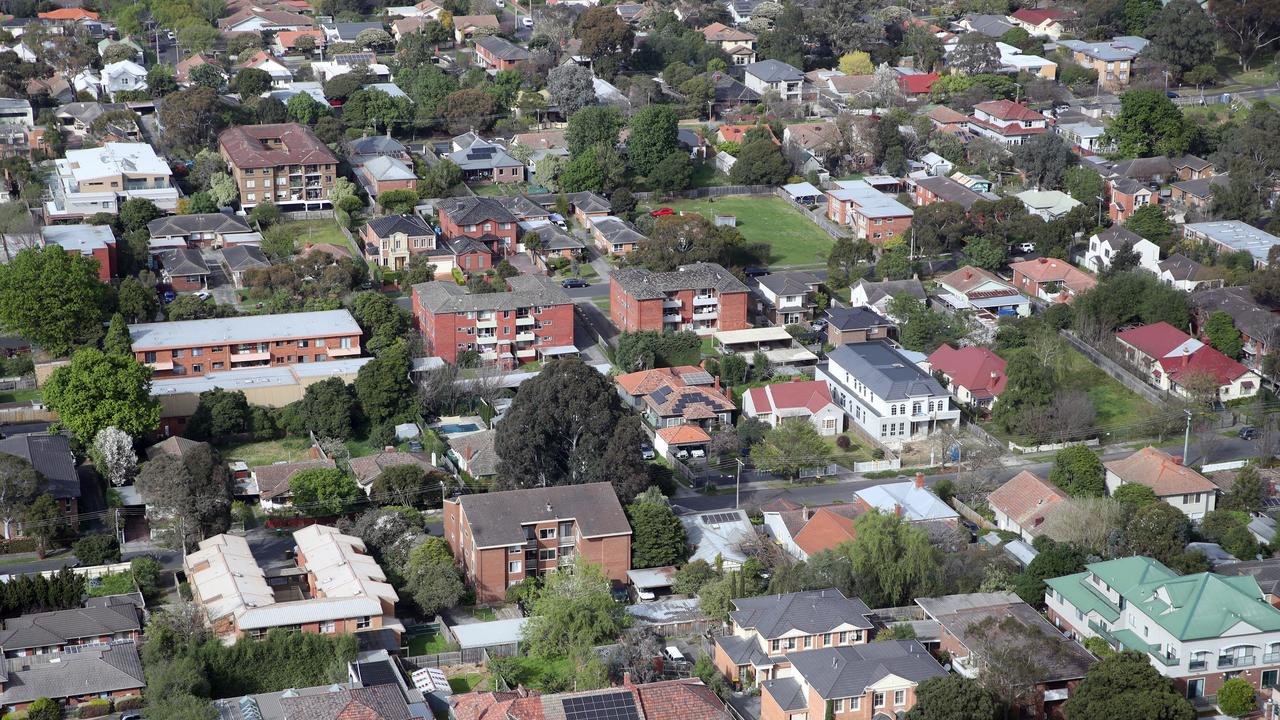Sign Aussie mortgages are going to fall as cash rate looks set to be cut
The RBA has paused the cash rate for the first time in 10 months. And there are strong signs of what could happen next.

Interest Rates
Don't miss out on the headlines from Interest Rates. Followed categories will be added to My News.
ANALYSIS
After Tuesday’s RBA cash rate pause, economists are divided about what comes next. However, the market is more sure. Cash rate futures expect the RBA to cut rates by the end of the year.
RBA cash rate futures curve
The likelihood is that the rate cuts will be sooner and steeper. There are four reasons why.
First, Australian inflation is falling and is likely to keep doing so. There is a lot of embedded disinflation in goods, housing construction costs, food and tourism. Even energy is peaking.
Moreover, wage growth is falling back as the labour supply shock of mass immigration takes its toll. This ensures that services inflation will also ease.
Second, this week, the Australian Government quietly released its latest commodity price outlook and it was dire. Post-Covid and Ukraine war prices are rightly expected to reset in falls as large as those that transpired after 2011.
This guarantees weak national income for years, further pressure on wages, and more falls in inflation.
Third, the US economy is sinking inexorably into recession. It was already struggling mightily before the recent bank shock. Afterwards, the Fed may not push rates as high, but only because credit is tightening in the private sector.
Global trade shock to hit
Lending standards have never tightened so much without a recession. And there is a peculiarity to this that makes it likely to last longer than usual. In a normal cycle, soured assets hit banks after something breaks in the real economy. This time, US regional banks are leading the bust, and as the economy weakens due to a lack of credit, soured assets will hit next, prolonging the credit crunch.
The Australian and US economies are not as linked as they once were, but the US consumer is still the engine of global consumption, and as they baulk, a trade shock will radiate outwards to Europe and China.
If we add these three factors together we get the fourth reason why the RBA will cut next.
It is easy to find an analogous period in Australia’s macroeconomics.
The post-2011 period of global growth shared important similarities. The US economy was not shrinking but was struggling. Europe was in recession during its banking crisis. And China was slowing as it sought to restructure its growth away from construction.
Australia used mass immigration to offset these growth headwinds. This was the first time this had been done. Normally, immigration slows with the economy to complement the labour market. After 2011, it was used to drive growth by itself.
This did lift GDP, but it also killed off income per capita in a highly deflationary period of falling living standards that included the RBA slashing the cash rate by 225 basis points over six years.
A similarly lost decade looms.
David Llewellyn-Smith is chief strategist at the MB Fund and MB Super. David is the founding publisher and editor of MacroBusiness and was the founding publisher and global economy editor of The Diplomat, the Asia Pacific’s leading geopolitics and economics portal. He is the co-author of The Great Crash of 2008 with Ross Garnaut and was the editor of the second Garnaut Climate Change Review.
More Coverage
Originally published as Sign Aussie mortgages are going to fall as cash rate looks set to be cut




